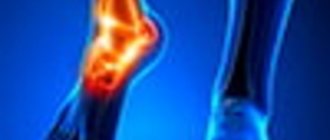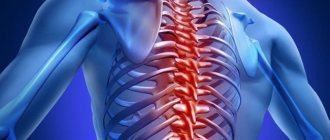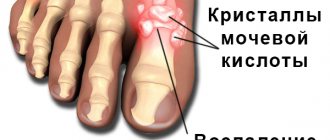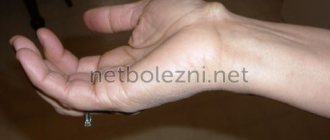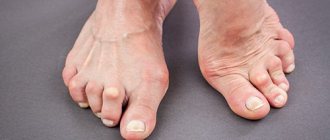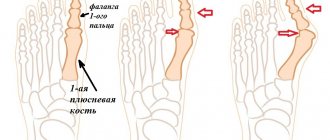Many patients complain that they have a lack of air due to osteochondrosis, which can even provoke a panic attack or an attack of high blood pressure. In fact, the feeling of not being able to breathe is not the most pleasant and can cause associated autonomic reactions. There are cases where lack of air during thoracic osteochondrosis provoked a primary attack of suffocation, which led to the development of an idiopathic form of bronchial asthma.
It’s worth taking this problem very seriously and here’s why. The fact is that an attack of suffocation may be a signal that the process of innervation of the respiratory system is disrupted. The corresponding segments of the spinal cord are located in the cervical and thoracic spine. The radicular nerves depart from it. By branching, they create nerve plexuses responsible for the innervation of all internal organs of the chest.
The human respiratory system is quite complex. It includes the larynx, trachea, bronchial tree and lung tissue, consisting of tiny alveoli. A direct process of gas exchange occurs in them: venous blood is freed from carbon dioxide and enriched with oxygen, which is carried by red blood cells.
Innervation provides sufficient clearance of the trachea and bronchial tree so that air can pass freely during inhalation and exhalation. If the innervation of even a small area of the bronchial tree is disrupted, then a systemic spasm occurs. In this case, a person physically cannot take a full breath. With thoracic osteochondrosis, the pleura may reflexively spasm due to a sharp pain syndrome. This is a membrane of connective tissue that covers both lungs. If it loses its elasticity, then it is very difficult to inhale.
The third common problem that occurs in patients with thoracic and cervical osteochondrosis is a violation of the innervation of the intercostal muscles. In order for a person to breathe, the following mechanism works:
- carbon dioxide accumulates in the blood, as a result of which the brain gives the command to inhale (the respiratory center is responsible for this);
- expansion of the chest begins due to the work of the intercostal muscles and the diaphragm;
- the lung tissue expands, air enriched with oxygen enters the alveoli;
- As soon as the level of carbon dioxide in the blood drops to a physiological level, the process of exhalation begins, during which air enriched with carbon dioxide comes out of the lungs.
What happens if the innervation is disrupted? The transmission of nerve impulses from brain structures to the respiratory muscles is delayed. The breathing process is disrupted, and the patient may develop reflex shortness of breath.
It is even more difficult when there is a sharp subsidence of the intervertebral discs. If their height is greatly reduced, the costovertebral joints begin to collapse. As a result, problems arise with inhalation and exhalation.
Well, one should not discount such a serious problem as the development of intercostal neuralgia against the background of a long-term degenerative dystrophic process in the cartilaginous tissues of the spinal column.
Lack of air in cervical osteochondrosis can be caused by compression of paired cranial nerves. Some of them are responsible for the formation of the solar nerve plexus and the innervation of the muscle tissue of the diaphragm. Therefore, there is a feeling of being unable to breathe air.
If you have a feeling of lack of air due to the development of cervical or thoracic osteochondrosis, we recommend that you immediately consult a neurologist. Unfortunately, in some cases, such a condition may indicate that a person has a disturbed position of the spinal cord. Spinal canal stenosis at an early stage can give a typical clinical picture, in which shortness of breath and a feeling of lack of air occur.
In Moscow, you can make an initial free appointment with a neurologist and vertebrologist in our manual therapy clinic. Experienced doctors will conduct an examination, make an accurate diagnosis and help cope with the existing problem.
Can osteochondrosis cause lack of air?
The most important thing that worries patients is whether, with osteochondrosis, a lack of air can negatively affect the condition of the entire body. It certainly can. After all, when breathing, the most important process for life occurs - gas exchange. All cells in the human body require oxygen to function properly. This gas ensures the oxidation of metabolites and leads to all biochemical reactions.
Can osteochondrosis cause a lack of air and why does this happen:
- disruption of the innervation process entails the problem of sufficient expansion of the lung tissue;
- complete gas exchange does not take place in the alveoli and some of the carbon dioxide remains in the red blood cells;
- it, together with arterial blood, enters the respiratory center of the brain;
- resulting in a feeling of lack of air;
- increased respiratory movements of the chest are provoked;
- secondary dyspnea may develop.
Lack of air during breathing with osteochondrosis can provoke the development of degenerative processes in the brain, heart muscle, liver, kidneys, etc. This negatively affects the patient’s well-being, causing him to feel constant weakness, drowsiness, and fatigue. Depression may form.
How to get rid of shortness of breath
Shortness of breath is only a symptom, therefore it can be eliminated during the treatment of osteochondrosis. Only after the underlying pathology is cured, all its clinical manifestations disappear. Osteochondrosis is one of the diseases that cannot yet be completely cured. But with the help of a course of pharmacological drugs, it is possible to stop the spread of the destructive process and reduce the severity of symptoms.
| Drugs that eliminate shortness of breath in osteochondrosis | Therapeutic effect |
| Pentoxifylline, Trental, Nicotinic acid, Eufillin | They improve microcirculation and have angioprotective and antiaggregation effects. Dilate blood vessels, have a stimulating effect on the respiratory center, increase the frequency and strength of heart contractions |
| Mydocalm, Tolperizone, Sirdalud, Baklosan, Baclofen | Relaxes skeletal muscles, eliminates muscle spasms, prevents pinching of nerve roots and blood vessels |
| Milgamma, Combilipen, Neurobion, Pentovit, Neuromultivit | They supply the body's nerve cells with glucose, normalize the conduction of nerve impulses, and increase the ability of nerve tissue to regenerate. |
To improve breathing during therapy, doctors recommend regularly doing therapeutic exercises and physical education, yoga, and swimming. Sleeping on an orthopedic mattress and pillow can often help you get rid of shortness of breath.
Orthopedic mattress.
Causes of lack of air in osteochondrosis
The main causes of lack of air in osteochondrosis are impaired innervation, severe pain and reflex spasm of the respiratory muscles. Most often, lack of air develops with osteochondrosis of the thoracic region due to the destruction of the costothoracic joints and a decrease in the height of the intervertebral discs. The intercostal muscles cannot function fully, their innervation and blood supply are disrupted. The process of myocyte dystrophy may begin. This is dangerous, since prolonged oxygen starvation can provoke the death of cells in the brain, heart and other important organs.
If you have thoracic osteochondrosis and are short of air, consult a doctor immediately. Timely medical care will help avoid a number of negative consequences:
- sclerosis of lung tissue;
- scar formation in the alveoli and lobes of the lung;
- reduction in vital lung capacity;
- oxygen deficiency of internal organs;
- development of idiopathic form of bronchial asthma.
Lack of air with osteochondrosis of the cervical spine is no less dangerous, but it may be associated with slightly different reasons. Very often, the destruction of cartilage tissue in the cervical spine provokes narrowing or tortuosity of the vertebral arteries. The blood supply to the posterior parts of the brain is disrupted. This condition is called posterior vertebral artery syndrome. It often provokes panic attacks.
During an attack, a person feels dizziness, fear and a feeling of lack of air. This can actually increase the percentage of carbon dioxide in the blood (hypercapnia) and decrease oxygen levels. At the peak of a panic attack, this can cause loss of consciousness.
If you have cervical osteochondrosis and lack air, contact a vertebrologist. This doctor will be able to determine exactly what triggers this sensation during your initial consultation and will develop an individual course of treatment for you.
Remember that if there is not enough air during osteochondrosis, this is an extremely unfavorable clinical sign. He says that serious pathological changes have occurred. A serious disruption of the innervation of the tissues of the respiratory system is caused or there is a lack of blood supply to the structures of the brain. The patient’s situation becomes most serious at the moment when he develops a complication of osteochondrosis - a herniated disc falls into the cavity of the spinal canal.
It puts pressure on the dural membranes, provokes dislocation of the spinal cord, and disrupts the circulation of the cerebrospinal fluid. All this causes spinal cord stenosis, increased intracranial pressure, a panic attack and a feeling of shortness of breath.
Why does pathology of the thoracic spine occur?
This part of the spine experiences moderate load and limited mobility. However, the pathology is common. The disease can be caused by one of the reasons or their combination:
- injuries and damages;
- excessive load on the department, including in childhood;
- age-related changes associated with decreased nutrition of disc tissue between the vertebrae;
- endocrinological diseases, especially during menopause;
- age-related impairment of calcium absorption;
- excess body weight;
- problems with blood vessels, atherosclerotic deposits in the vessels of the thoracic region;
- weak muscle corset.
What to do if there is a lack of air due to osteochondrosis
If there is a lack of air during osteochondrosis, the first thing to do is to calm down and prevent the development of panic. This will only make your condition worse. Take a position in which you feel comfortable. It is best to lie down on a hard surface. The torso should be in a semi-sitting position. Before this, you need to ensure a flow of fresh air - open the window. If this is not possible, then it is better to go out into the fresh air. But it is not recommended to be in this state in a standing position without assistance, as fainting may develop.
If the lack of air when inhaling due to osteochondrosis does not go away within 30 minutes, call an ambulance team. This may be a sign of the development of another serious illness that requires emergency medical attention.
Treatment of feeling of lack of air with osteochondrosis
Treatment for the feeling of lack of air due to osteochondrosis should begin with an accurate diagnosis. It is important to see an experienced vertebrologist. It is the doctor who must conduct an examination and identify what exactly prevents the respiratory movements of the chest from being fully carried out.
After identifying the potential cause of the feeling of lack of air in osteochondrosis, treatment should be aimed at treating the identified disease. In itself, the feeling of lack of air with osteochondrosis is not a disease, and if you carry out separate treatment, you will not get any positive results.
To eliminate the feeling of lack of air caused by osteochondrosis, you need to do the following:
- eliminate compression from the root nerves and their branches, for example, using manual traction of the spinal column;
- improve microcirculation of lymphatic fluid and blood in the area of damage and inflammation of the cartilage tissue of the intervertebral discs for their rapid regeneration - using osteopathy and physiotherapy;
- improve the performance of muscle fibers with complexes of therapeutic exercises and kinesiotherapy;
- start the regeneration process using reflexology techniques (acupuncture);
- if necessary, electromyostimulation and laser treatment are used;
- massage allows you to relieve excess muscle fiber tension, improves blood supply and metabolism.
If you have a feeling of lack of air due to osteochondrosis and you want to get rid of it with the help of safe and effective treatment, then sign up for a free initial appointment with a vertebrologist right now. To do this, fill out the doctor appointment form located below on the page. You can also call us at the phone number indicated on the page.
During the initial free consultation, the doctor will diagnose you and give you all the necessary recommendations for further examination and treatment.
Diagnosis of osteochondrosis
Neurologists at the Yusupov Hospital diagnose osteochondrosis using the following research methods:
- Physical;
- Instrumental;
- Laboratory.
The doctor examines the patient and determines the characteristic signs of compression or pinched nerve roots. X-rays and computed tomography can determine changes in the anatomical structure of the vertebrae. With their help, the doctor can visualize the displacement of the vertebrae relative to each other, their deformation, flattening, unequal height, and determine the presence of neoplasms and intervertebral hernias.
To differentiate neurological symptoms, electromyography is prescribed. Changes in laboratory parameters are not specific. They are used for the purpose of differential diagnosis of osteochondrosis with inflammatory and autoimmune processes.
With osteochondrosis, shortness of breath and referred pain often occur, which mimic diseases of the internal organs: coronary heart disease, pancreatitis, peptic ulcer, irritable bowel syndrome. For differential diagnosis, doctors at the Yusupov Hospital conduct additional examination using electrocardiography, ultrasound, and angiography. If shortness of breath is present, spirometry is performed, and the patient is consulted by a pulmonologist and cardiologist.
A targeted examination of the affected intervertebral disc is carried out using discography. To determine the extent and localization of damage to nerve pathways, electrophysiological studies (electroneurography, evoked potentials, electromyography) are used.



